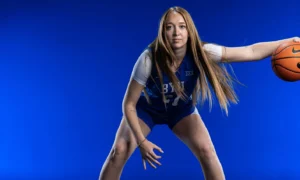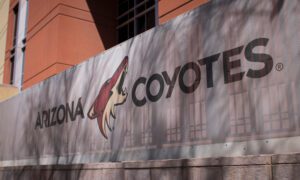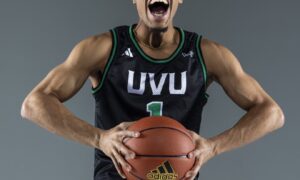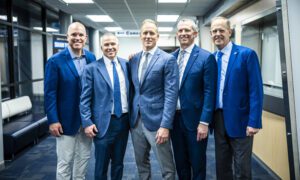Why the PAC10 is Struggling to Make a Media Deal Part 7: Football & Basketball Attendance Shows Long-term Declining Trends
Link to Part 2: Brand/Fan Base Value
Link to Part 2a: Silver vs Altimore Fan Base Estimate
Link to Part 4: TV Market Value
Link to Part 5: Would SDSU & SMU (or Tulane/Rice) Be Dilutive To PAC Media Value?
Link to Part 6: Social Media Metrics Show Low Fan Engagement for PAC
By Jeff Fuller
As the Pac-10’s media deal negotiations drag on, seemingly endlessly, recall that this series has highlighted various ways the once proud conference continues on a downward trajectory (See Part’s 1-6 linked above.) Such a “trajectory” may at least partially explain why there are rumors aplenty of the PAC having to get creative and forward-thinking with their media deal. Traditional major linear partners such as ABC/ESPN, Fox, and NBC have thus far shown little interest in partnering with the PAC in any meaningful or lucrative way.
While strategic and market forces certainly play a part in Pac-12 administrators, Kliavkoff specifically, being out-maneuvered on multiple fronts, the underlying, and oft overlooked, reason for these struggles is that a PAC lacking USC/UCLA simply never was “have to have it” appointment-viewing TV from a media executive’s standpoint. Even before the exodus of the LA schools, the fact that the Pac-12 Network never gained any widespread demand nor distribution might have served as “the canary in the coal mine” when it comes to the potential media value of the regional, west-coast based conference.
Can a look at football and basketball attendance trends add more evidence to the “trajectory” claims?
Football Attendance
First off, much has been written and theorized about the ongoing trend of decreasing college football attendance for several years. But is this affecting everyone equally? Below is a comparison of the football attendance of all five of the “Power Conferences” over the last 10 (non-COVID) seasons.
*Data for conferences compiled and sourced at this spreadsheet
There were no meaningful attendance figures kept for the 2020 season, and there was even a notable dip in attendance during the 2021 season as some individuals may still not have felt comfortable in large gatherings. However, even pre-COVID, the notable negative trends were already evident, especially in the Big 10 and Pac-12 conferences. Additionally, while all other P5 conferences saw a 2022 attendance spike that surpassed their pre-COVID attendance numbers (the “pent-up demand” phenomenon), the Pac-12 did not. A comparison of 2012 and 2022 attendance shows the Pac-12 struggling mightily to hang on to their fans, far beyond any other conference.
The SEC still reigns supreme when it comes to average college football attendance, with the Big Ten averaging just over 10,000 fewer fans per game. The moves of Oklahoma/Texas to the SEC and USC/UCLA to the Big Ten, starting in 2024, actually widens this gap significantly to over 14,000 fans. How do the other P5 conferences stack up?
While the current Big12 is a clear Bronze medalist in this metric, the loss of their blue-blood brands, and bringing four new schools into the P5 ranks, drops their average attendance into a third-place tie with the ACC at around 47,000. The PAC has been a clear fifth place finisher here in recent years. However, just a decade ago, it was the ACC that was clearly finishing 5th out of the five P5s every year.
In fact, while much has been made about declining attendance at college football games, there has been only a 4.6% decline among all P5 schools from 2012 to 2022. When excluding the Pac-12 from these numbers, the decline shrinks to only 2.1%. Put more clearly, when looking at attendance between 2012 and 2022, the combined attendance of the ACC, Big10, Big 12, and SEC, has only dropped 2.1% while the Pac-12 dropped 17.3%
Previous installments in this series have shown that while the PAC does have relatively large alumni bases, they tend to be relatively disengaged in college sports. Sadly, even as PAC enrollments and total living alumni figures have been increasing over the years, the attendance figures have been declining.
In the on-going comparison between the PAC and Big12 (relevant because both entered the market to negotiate media deals at roughly the same time) the former does hold an advantage in average enrollment and alumni base. As such, wouldn’t it seem “a layup” for the PAC to out-perform the Big12 in attendance at major sporting events? And how do other conference realignment maneuvers forecast future attendance trends?
2022 Football attendance spreadsheet Link
The “Percent Capacity” figure is often used to gauge the passion and engagement of fan bases and the Big 12 and SEC consistently do the best with filling up their stadiums. Looking at last year’s “Percent Capacity” is another strike against the Pac-12, and win for the Big12, as they were polar opposites in this metric:
–Big12: 96.1%
-SEC: 95.1%
-Big10: 89.9%
-ACC: 81.9%
–PAC: 77.5%
For those interested in the attendance figures for individual teams, over the last several years, see that data compiled in the table below (data expanded upon from D1Ticker’s recent 2022 report and data prior to 2019 from NCAA’s website).
Men’s Basketball Attendance
What about attendance at the other “revenue sport,” men’s basketball? Below are listed the top eight conferences by average attendance since 2014 (data sourced from NCAA.org and compiled at this spreadsheet):
At first glance, downward long-term trends definitely jump out for the majority of conferences. Upon closer inspection, the Pac-12 is currently on a five year streak of declining attendance (this excludes the 2021 COVID-affected season.) Since 2014, only the Big Ten conference has more than three years in a row of decline, and the ACC and Big12 haven’t declined for more than two years in a row at any point. This longer-term analysis showed some quirky data for the AAC as they added 4 weaker Basketball brands between 2014-16 (ECU, Tulane, Tulsa, and Navy), bringing down their numbers.
When looking at the last six years of attendance data (in graphics above and below), some concerning trends jump out for the ACC, and some positively deafening alarm bells are sounding for the Pac-12.
As in football attendance, the Pac-12 is an obvious outlier among the Power (Six) Basketball conferences. In 2023, the Pac-12 averaged nearly 25% fewer people attending their basketball games than in 2017. The following graphic (spreadsheet link) explores how upcoming conference realignment changes would affect these numbers and also shows the average basketball arena capacity as well as how filled-up they were last season. The potential addition of San Diego State seems like it would help bolster the PAC’s struggling basketball programs, and the data here seems to back that up, though not in a “game-changing” way.
Individual team data listed below:
When isolating out the “percent capacity” metric for men’s basketball however. the bad news gets even worse for the Pac-12:
-Big East: 89%
-Big 12: 85%
-B1G: 79%
-SEC: 77%
-ACC: 66%
-AAC: 58%
-MWC: 55%
-Pac-12: 51%
The questions remain:
“Where have all the Pac-12 fans gone?”
and
“Are they ever coming back?”
Many media executives are apparently having their doubts.
__________________________________________________________________________________________
Footnotes/Extra Points:
- Is football attendance REALLY declining by as much as is being reported? Most people who claim this are citing FBS-wide “average attendance” figures as evidence. However, there have been 12 formerly-FCS schools added to the FBS ranks since 2012. Those 12 schools averaged only 19,425 fans at their stadiums in 2022, which is slightly below the average G5 team at 19,790. For comparison, the average P5 team has over 58,000 fans on a weekly basis (as noted above, the P5 attendance as a whole has only dropped by 4.6% since 2012 and this was only 2.1% after excluding the Pac-12.) By growing the FBS pool of schools by 10% with smaller programs, this is clearly dragging down the average across all of FBS. While the trend toward lower attendance is unmistakable, it is somewhat exaggerated by this statistical quirk.
- All attendance figures need to be taken with a grain of salt. Many question the reliability of attendance figures as schools often report the number of “tickets sold/distributed” and not actual fans in the stands. A 2017 WSJ analysis of 96 public school records showed only ~66% of reported attendees actually had tickets scanned
- ADU analyzed the relationship between on-field success and how well schools fill up their stadiums and showed a pretty tight correlation for the 2021 season.
Find the latest conference realignment news on ESPN 960






































